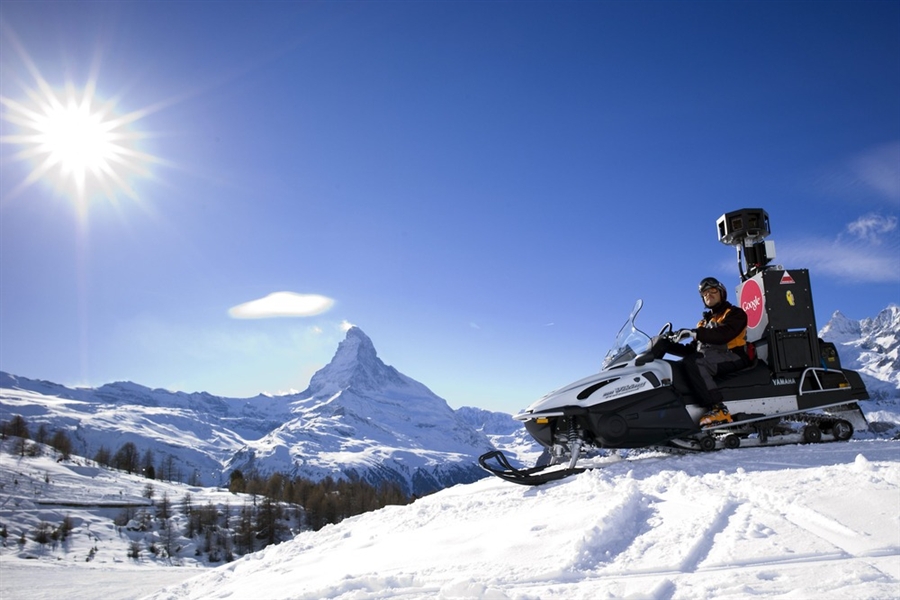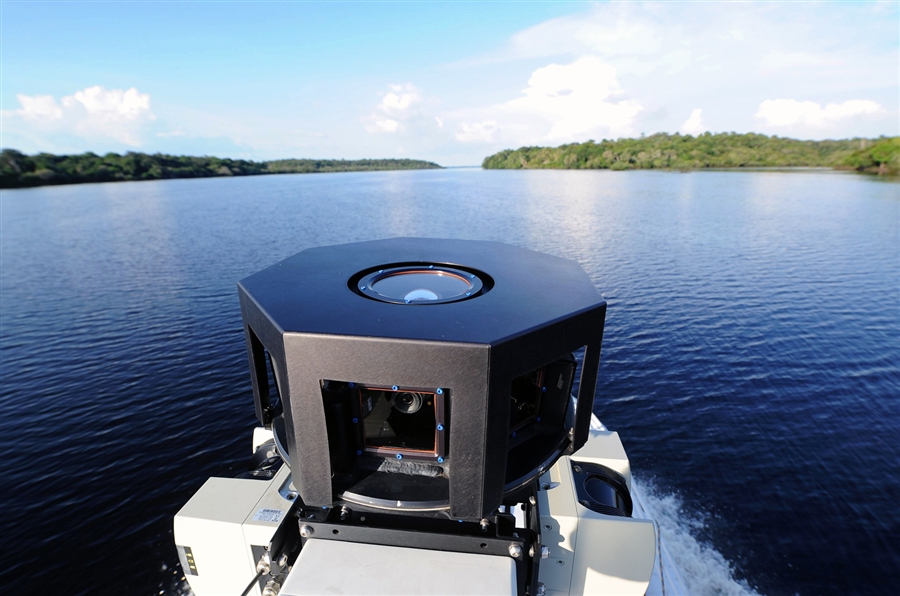When your grandparents were young and curious and eager to see the world, they had to join the Navy. Today, you can just go to Google. Now five years old, Google Street View is an endless source of fun and adventure. Sure, there are the serendipitous and oftenhilarious slideshowsof weird Street View sightings. But lately Google’s been going for the fringes, lugging its cameras to far off places that most people could never visit in real life. The latest spot is the remote Inuit village of Cambridge Bay in Ottawa. With a population of just less than 1,500 people, Cambridge Bay doesn’t even have cars, so Google rigged up a tricycle with a camera and GPS capabilities to photograph the streets of the sleepy fishing town. This place is so far north, away from civilization, that compasses don’t even work, making paper maps relatively useless for navigation. Google didn’t make the trek up there to make it easier for the local fisherman to find their way home — yes, even Inuits have iPhones — but rather to give the rest of the world a peek into the unique community. "People that have never been in the north, past trees, in communities you can only get to by airplanes; they just don't know," Chris Kalluk, a local Inuit who asked Google to send the Street View Team north, told The New York Times. "They wonder if we live in igloos and travel by dog team. I spoke with an elder the other day who said that the land belongs to all the people, so everyone should be able to see it."
With a population of just less than 1,500 people, Cambridge Bay doesn’t even have cars, so Google rigged up a tricycle with a camera and GPS capabilities to photograph the streets of the sleepy fishing town. This place is so far north, away from civilization, that compasses don’t even work, making paper maps relatively useless for navigation. Google didn’t make the trek up there to make it easier for the local fisherman to find their way home — yes, even Inuits have iPhones — but rather to give the rest of the world a peek into the unique community. "People that have never been in the north, past trees, in communities you can only get to by airplanes; they just don't know," Chris Kalluk, a local Inuit who asked Google to send the Street View Team north, told The New York Times. "They wonder if we live in igloos and travel by dog team. I spoke with an elder the other day who said that the land belongs to all the people, so everyone should be able to see it."
In the grander scheme of things, riding a tricycle through an Inuit village that’s a stone’s throw from the North Pole is hardly the strangest task that Google’s Street View team has undertaken. Just last week, the search giant announced that it had added 30 interactive maps of Mayan ruins to its site, including Chichen Itza, Teotihuacan and Monte Alban, along with plans to add 60 more. Since there aren’t many paved roads down there, they had to use the camera-equipped tricycle to navigate the area. Earlier this year, it was America’s National Parks that were getting all of the attention from the Street View team. Google got permission from the Department of the Interior to put five of California’s parks, including Joshua Tree and Death Valley, on Street View. Everyone likes to take a road trip through a national park," said Evan Rapoport, the Street View project manager, to the Associated Press. “Bringing unique places to people that they might not go in the real world is unique to Street View.”Then there are the really adventurous destinations. Last October, Google recruited the researchers from the University of Minnesota to help them photograph some of the more breathtaking areas of Antarctica. Despite the fact that it was Antarctica’s summer, temperatures dipped as low as -60º F, and they had to wrap the cameras in heat packs to keep them from freezing. They even offered up a detailed look at the still fully stocked huts of explorers Ernest Shackleton and Robert F. Scott. Following in their footsteps, Google’s team even made it to the South Pole. That’s their shot of the pole itself, above.
The list of weird Google Street View projects goes on. They rode the Rhaetian Railway in Switzerland through the Alps as part of a partnership with UNESCO. They also rode the Trans-Siberian railroad and even included some YouTube videos in the mix. (It’s nothing like that terrifying Woody Harrelson movie.) Sticking to the vehicle trope, they even gave the Indianapolis Motor Speedway the Street View Treatment.So many places! And yet, the question still remains: Why? Well, consider the fact that each and every one of the expeditions above made headlines around the world, many of which were followed by fawning news articles about how Google’s showing everybody the many wonders of the world for free. Google can use every “Google is great” quote it can get, and these stunts are surefire ways to get them in print. Plus, it’s also a ton of fun to take pictures of people without their permission. Especially when they’re naked or peeing in public.
Advertisement

The Google trike at work in Cambridge Bay

The Google snowmobile
Advertisement
